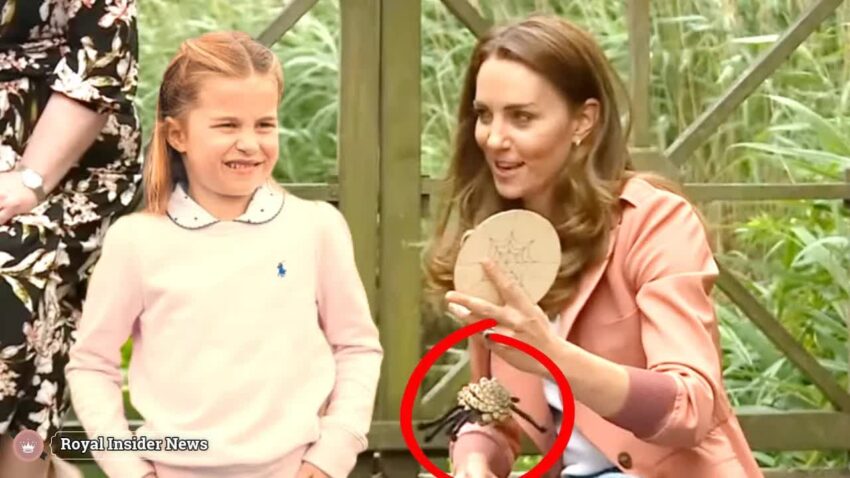The Duchess of Cambridge recently spent time with a group of children at the Natural History Museum’s wildlife gardens.
During her visit, she engaged with pupils from St Mary of the Angels Primary School, showcasing her creativity by crafting a toy spider using sticks and pinecones.
This activity is likely to bring joy to her daughter, Princess Charlotte, who previously expressed her fondness for spiders in a charming video shared in late 2020.
In the video, Charlotte asked naturalist Sir David Attenborough if he also liked spiders, revealing her own fascination with the creatures.
Sir David Attenborough was delighted to learn about Charlotte’s interest in spiders and took the opportunity to emphasize why they are wonderful creatures that should not be feared.
It appears that the Duchess and Prince William support their daughter’s love for spiders and even join her on spider hunts.
Royal expert Katie Nicholl revealed that Charlotte is a huge fan of spiders, and the family often goes on these hunts together, allowing her to observe them up close before setting them free.
This aligns perfectly with Kate’s belief in the benefits of outdoor learning and her commitment to ensuring her children have ample time outdoors for their mental and physical well-being.
Kate’s passion for the outdoors was evident during her visit to the Natural History Museum’s Wildlife Gardens.
She took the opportunity to learn more about the museum’s upcoming Urban Nature Project (UNP), set to launch later this year.
The project aims to transform the museum’s five-acre grounds into an urban nature hub, complete with outdoor classrooms, a living lab, and a weatherproof replica of the museum’s famous Diplodocus, Dippy.
By doing so, the project seeks to address the decline of urban biodiversity, a cause that Kate has championed as the museum’s patron since 2013.
During her visit, the Duchess engaged in an immersive storytelling activity and generously shared honey produced at her Norfolk home with the schoolchildren.
She also took a tour of the wildlife garden alongside Dr Doug Gurr, the museum’s director.
In an exciting development, Kate revealed that she has a beehive at Anmer Hall and offered the children a taste of the honey it produces.
She asked them if it tasted different from store-bought honey and if they could detect the flavors of flowers.
In addition, the Duchess actively participated in affixing an audiomoth acoustic recording device to a cherry tree.
This device will capture ambient sounds across various frequencies, including those beyond the range of human hearing.
The data collected will aid scientists at the museum in studying patterns of bird, mammal, and insect activity in the garden, including the behavior of bats and pollinator communities.
The device will remain on-site until the end of summer, and the data gathered will be analyzed as part of the UNP National Schools Programme, which is set to launch in September.
The Duchess of Cambridge’s visit to the Natural History Museum’s Wildlife Gardens exemplified her commitment to outdoor learning and conservation.
